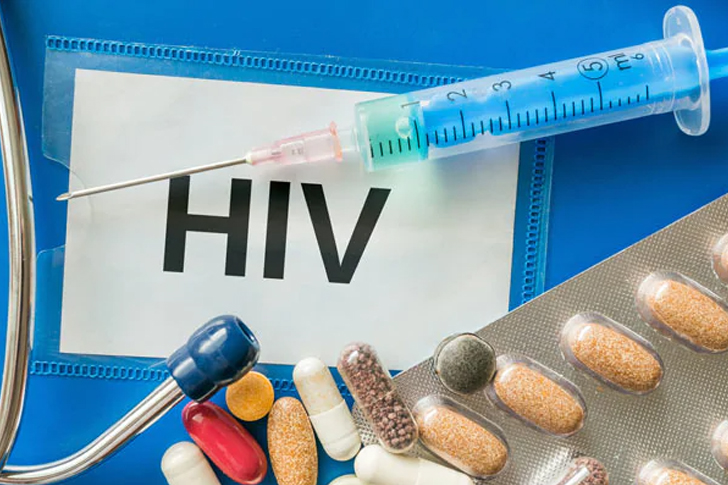Understanding Pre-Exposure Prophylaxis PrEP for HIV Prevention
HIV/AIDS remains one of the major public health challenges globally. As of 2021, approximately 38 million people worldwide were living with HIV. Despite significant advancements in treatment and management, preventing new infections is crucial to controlling the epidemic. Pre-exposure prophylaxis (PrEP) has emerged as a powerful tool in the prevention of HIV. This article explores what PrEP is, how it works, and its effectiveness in combating HIV.

What is Pre-Exposure Prophylaxis (PrEP)?
Pre-exposure prophylaxis (PrEP) is a strategy for people who do not have HIV but who are at substantial risk of getting it to prevent HIV infection by taking a pill every day. The pill (brand name Truvada) contains two medicines (tenofovir and emtricitabine) that are used in combination with other medications to treat HIV. When someone is exposed to HIV through sex or injection drug use, these medicines can work to keep the virus from establishing a permanent infection.
How Does PrEP Work?
PrEP works by interfering with the virus’s ability to replicate in a person’s body after exposure, which is crucial in preventing a permanent infection. The primary component of PrEP, the combination of tenofovir and emtricitabine, is also used as part of combination therapies for individuals who have already contracted HIV. However, when used as a preventive measure, PrEP provides a barrier that reduces the risk of HIV infection significantly when taken consistently and correctly.
The Effectiveness of PrEP
Several studies have demonstrated the effectiveness of PrEP as a significant reduction tool in HIV infection rates among at-risk populations. According to the Centers for Disease Control and Prevention (CDC), PrEP reduces the risk of getting HIV from sex by about 99% when taken daily. For those who inject drugs, PrEP reduces the risk of getting HIV by at least 74% when used consistently. It is crucial to note that the effectiveness of PrEP is highly dependent on adherence. Inconsistent use of PrEP substantially decreases its protective benefits.
Candidacy for PrEP
PrEP is recommended for people who are HIV-negative and at high risk for HIV infection. This includes anyone in an ongoing relationship with an HIV-positive partner, people who do not consistently use a condom with partners whose HIV status is unknown and who are at substantial risk of HIV acquisition, and those who share injection drug equipment. The decision to start PrEP is typically facilitated by healthcare providers who evaluate potential users through risk assessments and regular HIV testing.
Administration and Accessibility
PrEP is generally prescribed as a daily pill. It is critical that the medication is taken every day as directed to maintain its highest level of efficacy. While PrEP is a potent preventive measure, its success in different populations is highly dependent on the accessibility and awareness of the medication. Despite being a breakthrough in HIV prevention, PrEP usage rates, particularly among high-risk populations, are less than optimal due to factors including lack of awareness, cost, stigma, and limited access to healthcare services.
Challenges and Controversies
Despite its effectiveness, PrEP faces several hurdles. One of the primary challenges is awareness; many people who might benefit from PrEP aren’t aware it exists or don’t believe they are at risk of HIV. Additionally, there are controversies surrounding PrEP, particularly concerning its adoption among young people and issues of risk compensation—where individuals might engage in riskier behaviors because they perceive themselves as being protected by PrEP.
Global Impact and Future Directions
Globally, efforts are being made to increase the accessibility of PrEP as part of comprehensive HIV prevention strategies. Countries are integrating PrEP into their national health services with support from international health organizations like the World Health Organization (WHO), which recommends PrEP as part of a comprehensive set of preventive options in communities with high HIV prevalence. Looking forward, the expansion of PrEP access and the reduction of cost barriers are critical goals for public health globally, aimed at reducing and ultimately controlling the spread of HIV.
Conclusion
In conclusion, PrEP represents a major advancement in the fight against HIV/AIDS. By significantly reducing the risk of HIV infection, PrEP can play a crucial role in global efforts to end the HIV epidemic. However, for PrEP to change the course of HIV prevention, it requires correct and consistent use, alongside increased awareness, accessibility, and integration into broader health and community systems. Continued education, advocacy, and research are needed to overcome the barriers and fulfill the potential of this powerful preventative measure.
Understanding and promoting PrEP can empower individuals and communities to protect themselves in a world where HIV is still a major health threat. By increasing the visibility and availability of such preventive measures, we can make significant strides towards a healthier, HIV-free world.







Recent Comments